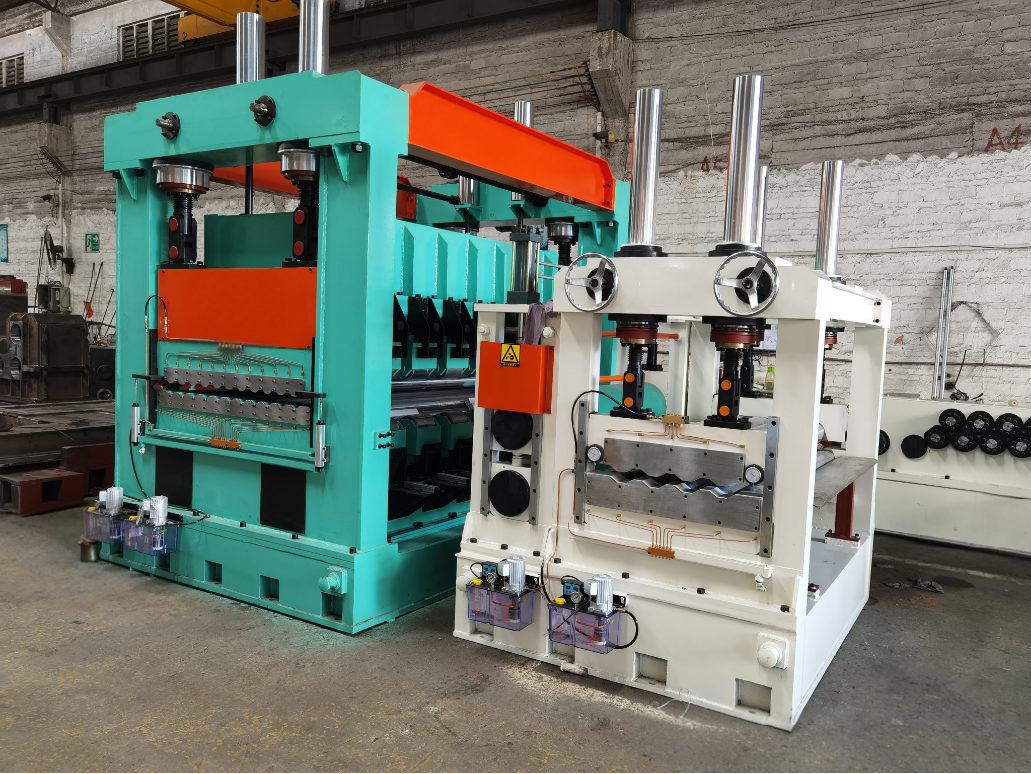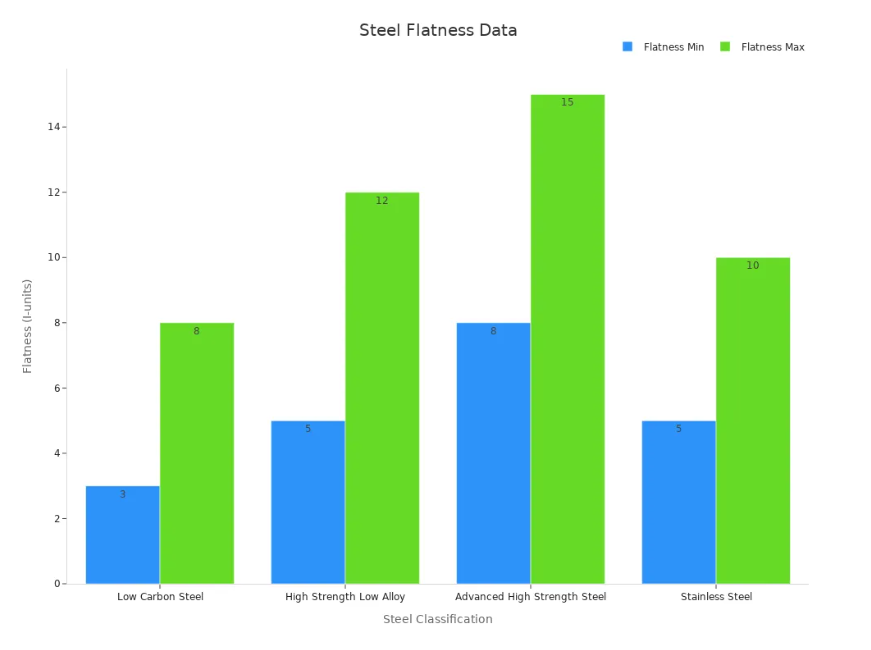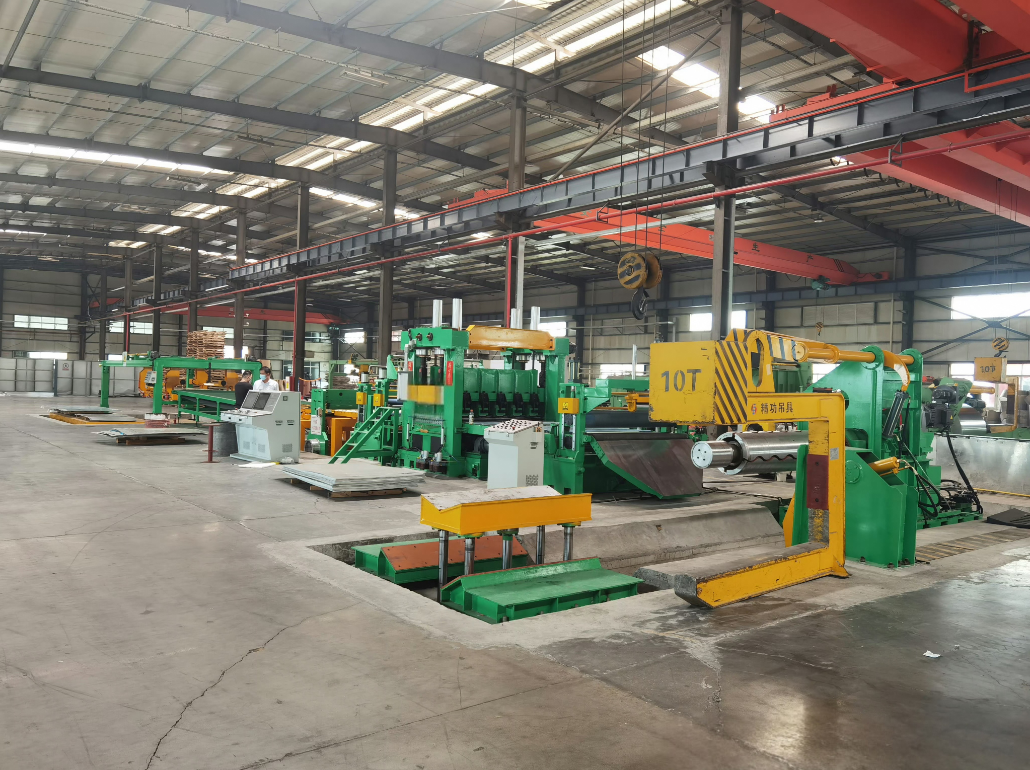How Cut to Length Lines lmprove Quality and Reduce Waste in Metal Processing?
More than 15% of metal is wasted with old methods, but a cut to length line lowers this waste to only 2-3%. This system makes exact, steady cuts and turns metal coils into flat sheets with very little loss. Companies notice big improvements in quality, speed, and saving money because automated lines stay accurate and use more of the material. Even a small rise in yield ratio can save a lot of resources and make products more alike.
Key Takeaways
- Cut to length lines cut metal coils into flat sheets. They do this with high accuracy. This helps lower waste from over 15% to about 2-3%.
- Automation and sensors help keep sheet size the same. They also make sure sheets are flat and have fewer problems. This makes products better and faster to make.
- Using these lines means less scrap and more money saved. They help use more of the metal and need less extra work.
- Industries like automotive, construction, and steel fabrication use these lines. They get faster production, exact cuts, and less wasted material.
- Regular maintenance and operator training keep machines working well. This helps keep people safe and gives high-quality results.

Leveling Machine
Cut to Length Line Process
A cut to length line changes metal coils into flat sheets. This happens through several automatic steps. Each step helps make sure the sheets are good quality. The process also helps save time and reduce waste.
Uncoiling and Leveling
First, big metal coils go into the machine. The metal is uncoiled and then leveled. Leveling uses special machines to fix the shape of the metal. These machines bend the metal back and forth over rolls. This helps remove problems like coil set and crossbow. Workers change the roll size and space for each sheet. They do this based on how thick and strong the metal is. Some leveling machines can change settings by themselves. This makes the metal flat and saves setup time. Fixing these problems helps the metal get ready for cutting. It also stops defects like waviness and bowing from happening later.
Precision Cutting
Next, the flat sheet goes to the cutting area. The cut to length line uses computers and lasers to cut the metal. The machines are very exact and can cut within 0.1 mm. Workers check the cuts with special tools. The machines also collect data to make sure every cut is right. Computer files help the machines cut the same way every time. This makes fewer mistakes and less scrap. Scrap can drop from 20% to just 2%. More sheets can be made faster. The finished sheets are the right size and shape for what is needed.
Stacking and Handling
After cutting, the sheets go to the stacking area. Machines like vacuum lifters and robots move the sheets. This keeps people from having to lift heavy metal. The right tools are picked for each sheet’s size and weight. This stops the sheets from bending or getting damaged. Safety tools like light curtains keep workers safe. Storage systems keep the sheets flat and easy to find. These steps help the sheets stay in good shape. The sheets are now ready for the next step or to be shipped.
Quality Improvement
Consistent Sizing
Manufacturers need metal sheets to be the same size. This helps them meet what customers want. A cut to length line uses sensors and computers to measure and cut metal. These machines make sure each sheet is almost the same. The sheets are checked for thickness and how even they are. The machines can keep the thickness close to ±0.1mm. They also keep the thickness even at ±0.05mm. The system checks and fixes itself while working.
Manufacturers use tests to check the metal. They use the four-point probe and eddy current tests. These tests look at how well electricity moves and how thick the coating is. The tests follow rules like ASTM B568. This makes sure the coating is measured right. Workers also look at the sheets and use cameras to find problems. By following world rules, companies make sure the sheets are always the same.
These rules help make sure every sheet is good and the same.
Flatness and Accuracy
Metal sheets must be flat for building, cars, and making things. If sheets are not flat, it causes problems later. A cut to length line uses leveling machines and sensors to keep sheets flat. The machines use both mechanical and optical sensors. These sensors make flatness maps of the sheets. They work even when the metal moves fast or is pulled tight.
The table below shows how flat different steel types are:

Laser tools check flatness quickly. Workers can also use dial indicators and feeler gauges by hand. Rules like ASTM A480 and ISO say how flat the sheets should be. If a sheet is not flat, heat or machines can fix it. These steps make sure every sheet is flat and ready for the next job.
Fewer Defects
It is important to have fewer defects in metal work. A cut to length line cuts and moves metal carefully. This helps stop damage, burrs, and other problems. Studies show plasma cutting can lower damage and heat marks. For example, plasma cutting can lower damage from 0.12 mm to 0.09 mm. It can also lower heat marks from 0.154 mm to 0.148 mm. Computers help predict and control how rough the surface is. This makes the surface better.
Experts say it is important to keep tools in good shape. Machines must be set up right, and workers need training. These things, plus computer models, help stop problems like burrs and tool wear. Quality systems watch for waste, returns, and how well machines work. Companies use charts and lean tools to find and fix problems fast.
Tip: Always watch for problems and fix them quickly. This keeps quality high and stops extra work.
The table below shows how much better quality is with new lines:
By working on these things, companies make better products. They waste less and make customers happier.
Reducing Waste
Minimizing Scrap
Cutting metal the right way helps make less scrap. A cut to length line uses sensors and computers to cut metal very carefully. This makes sure there are fewer leftover pieces and fewer bad sheets. Companies use different ways to check how much scrap they make:
- Material Utilization Ratio (MUR) tells how much metal becomes good parts. A higher MUR means less scrap is made.
- Waste-to-Output Ratio compares scrap to all the metal made. This helps teams see where they can do better.
- First Pass Yield (FPY) shows how many parts are made right the first time. It tells if the cutting is working well.
- Overall Equipment Effectiveness (OEE) checks how well machines work and how much time is lost because of scrap.
Most CNC machines make 2% to 5% scrap. Using the right tools, good programs, and checking quality can lower this number. New features like TRUMPF’s Drop & Cut help use more of the metal sheet. This can cut scrap by up to 14%. Cooling during laser cutting stops the metal from getting too hot. This also helps make less scrap. Old ways of cutting can waste up to 80% of the metal. New ways only use what is needed.
Studies show that making less scrap is important. Reports from the U.S. copper and steel scrap markets say good scrap control helps recycling and saves money.
Tip: Always check how much scrap you make and change your cutting plans to use more metal.
Efficient Material Use
Using metal well means getting the most out of every piece. A cut to length line turns coils into flat sheets with little waste. This helps companies move from throwing things away to reusing and recycling more.
Research says to first reduce, then reuse, and finally recycle. Doing these things means companies need less new metal. Using recycled steel or aluminum instead of new metal helps the planet. Making products last longer and easier to fix also helps use metal better.
New sorting tools like X-ray and AI systems help find good metals in waste. These tools make sorting better and help get more metal back. The Environmental-Resource Interacting Attribute (ERIA) framework helps companies pick which waste to recycle first. Pretreatment steps make it easier to get metal out of waste.
The table below shows some facts about saving metal and getting it back:
These steps help companies save money and protect the environment.
Cost Savings
Using metal better and making less scrap saves money. Companies that use a cut to length line spend less on metal because they waste less. Being careful with metal is worth more than just saving money. As rules and markets change, companies have more reasons to save metal.
Studies show that better ways of working and making more at once can lower costs. For example, when metal makers work together and use better machines, they spend less. New sorting tools and AI help find more good metal and make less waste, which also saves money.
Products and ways that use less metal also help lower pollution. This makes it even better for companies to use smart metal processing.
Note: Companies that use metal well often get their money back faster and make more profit.

Cut to Length Line
Industry Applications
Cut to length lines are important in many industries. These systems help companies make big, flat metal sheets that are very exact. The table below shows how different industries use cut to length lines and what they get from them:
Construction
Construction companies need big, flat steel sheets for buildings and bridges. Cut to length lines help them meet tough size and quality rules. These systems give several benefits:
- Cost savings: Fast lines handle large steel coils quickly. This means less work and tools last longer.
- Customization: Companies can order sheets in special widths. This means less cutting later.
- Precision tolerances: New lines keep sheet sizes and edges very exact. This helps parts fit together well.
- Clean surface finish: Razor slitting makes smooth edges. This stops rust and keeps steel strong.
Note: Laser surface velocimeters (LSVs) check sheet length and speed without touching the metal. This keeps the metal clean and makes sure every piece is the right size.
Roll forming and notching often work with cut to length lines. These steps make holes and shapes needed for fast building and strong joints.
Automotive
Car makers use cut to length lines to make car bodies, doors, and panels. These lines cut steel sheets to the right size. This helps robots and machines build cars faster. Sheets that are always the same size and flat have fewer problems. Companies save money and make cars safer by using good sheets. Flat sheets also help with painting and welding. This makes cars look better and last longer.
Steel Fabrication
Steel shops use cut to length lines to get metal ready for many products. These lines handle thick and heavy coils and turn them into sheets. These sheets are ready for welding, bending, or cutting. Important things in this area include:
- Machine speed, which shows how fast orders are done
- Accuracy and tolerance, which make sure each sheet is right
- Handling thick and heavy materials, so more jobs can be done
- Less waste, which saves money and materials
- Automated stacking and packing, which makes delivery faster
- Better safety and less downtime, thanks to new maintenance tools
Steel fabricators use these systems to work faster and make better parts for many uses.
A cut to length line helps make better metal sheets. It also helps companies waste less metal. This saves money and makes work faster. Products are more alike each time. Companies do some important things to get these good results. They keep blades sharp and check them often. Workers learn how to use the machines safely. They also check the process to fix problems early. The table below shows what happens when companies do these things:
It is important to be exact when working with metal. This will stay important as companies want better products and less waste.
FAQ
What metals can a cut to length line process?
A cut to length line works with steel, stainless steel, aluminum, copper, and other alloys. Operators pick the right settings for each metal. This helps get the best thickness, hardness, and finish.
How does automation improve cut to length lines?
Automation makes the process faster and more exact. Machines use sensors and computers to measure and cut metal. This means fewer mistakes and every sheet is the same size. Using automation also helps save money on workers.
Can a cut to length line handle different sheet sizes?
Yes. Operators can set the machine for many lengths and widths. The system changes quickly for each job. This helps companies fill special orders and waste less metal.
What maintenance does a cut to length line need?
Checking blades, cleaning, and updating software keeps the line working well. Operators look at moving parts and change tools that are worn out. Good care stops breakdowns and keeps the quality high.
Why is flatness important in metal sheets?
Flat sheets are needed for building, cars, and machines. If sheets are not flat, it causes problems when welding, painting, or putting things together. Leveling machines and sensors help keep every sheet flat and ready to use.

